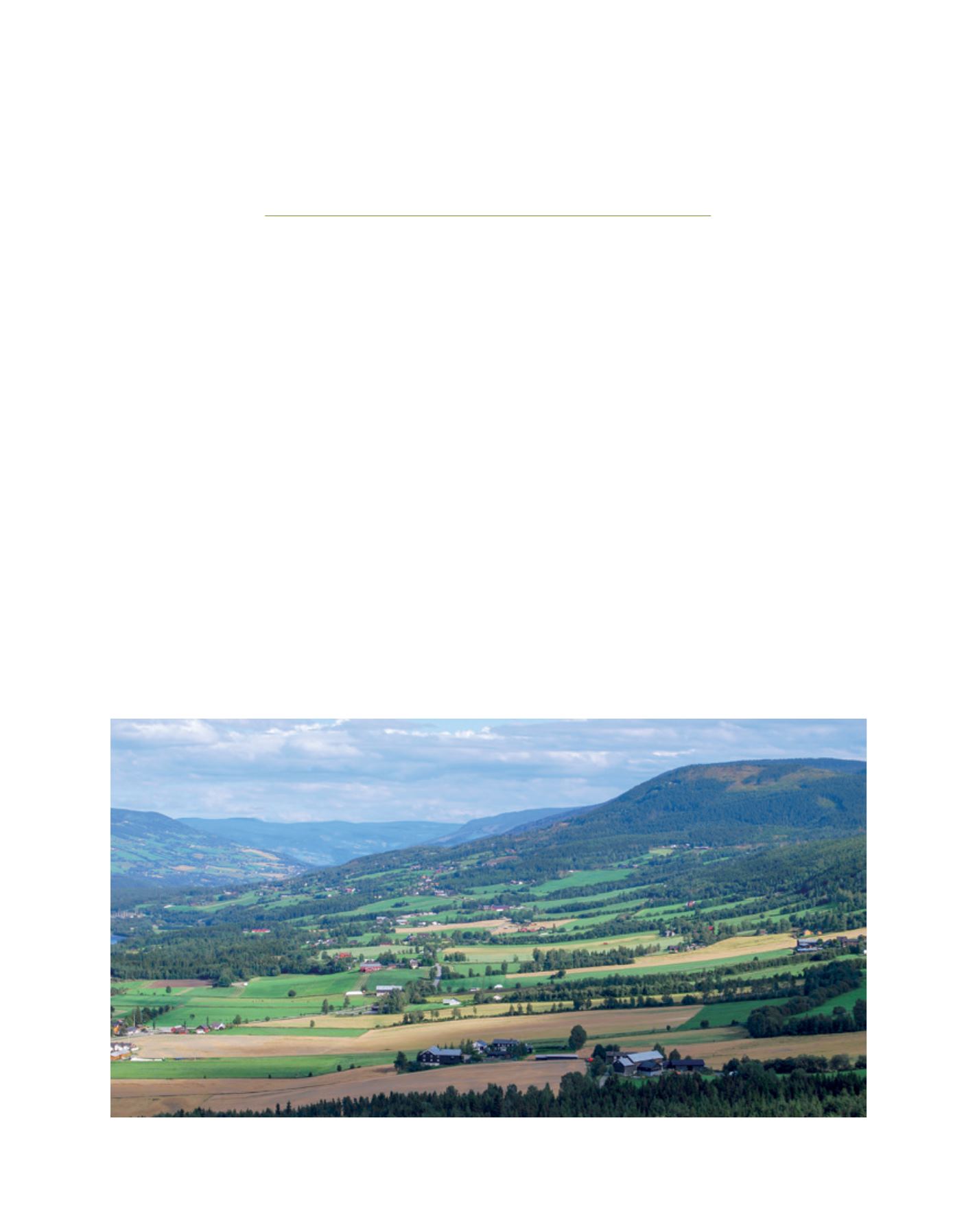

[
] 66
Family farming: the key to
food production in Norway
Eugen Tømte, Deputy Director General, Federation of Norwegian Agricultural Cooperatives
W
ith steep hills down to the fiords, high moun-
tains, small pieces of land, cold winters and short
summers, Norway may seem an unlikely place to
have active farming across the country. The key to achiev-
ing this is a tradition of family farming that has continued
for centuries. So far, society and politicians have supported
family farming as a tool to achieve the highest possible
national self-sufficiency based on national resources. And
farmers have achieved access to the market by creating and
developing strong farmer-owned cooperatives. Forestry is
also an important part of family farming, as a substantial
proportion of the cultivated forest in Norway is family owned
and often combined with other agricultural production.
Only a low percentage of farming families are able to earn
enough income from traditional production on the farm.
In most parts of the country, farming has traditionally been
combined with other activities such as fisheries and logging.
Today, one or several members of the family usually have
another occupation besides taking part in running the farm.
However, the family lives on the farm and contributes signifi-
cantly to the activity and economy in rural communities.
Norway covers a distance of 2,500 kilometres from the southern
part to North Cape at 71 degrees north. The climate and condi-
tions for agriculture differ significantly from south to north and
from the fiords to themountain areas inland. Population density is
low, with a total population of 5million inhabitants. An increasing
proportion of the population lives in cities and urban areas.
Only 3 per cent of Norway’s total area is arable land, and
30 per cent of this can be used for grain production and
vegetables. The rest of the area can only be used for grass
production. In addition, sheep and cattle graze in the moun-
tains during a short, but intensive summer.
With a very few exemptions, Norwegian farmers produce
for the domestic market. Still, the country’s degree of self-
sufficiency is less than 50 per cent on an energy basis. Norway
thus has a substantial net import of food, and national food
security is an important issue.
Norway has a national objective to maintain domestic
production and, within existing multilateral trade commit-
Image: Norges Bondelag; Lars Alhaug
Agriculture in Norway is characterized by small-scale family farms
D
eep
R
oots
















